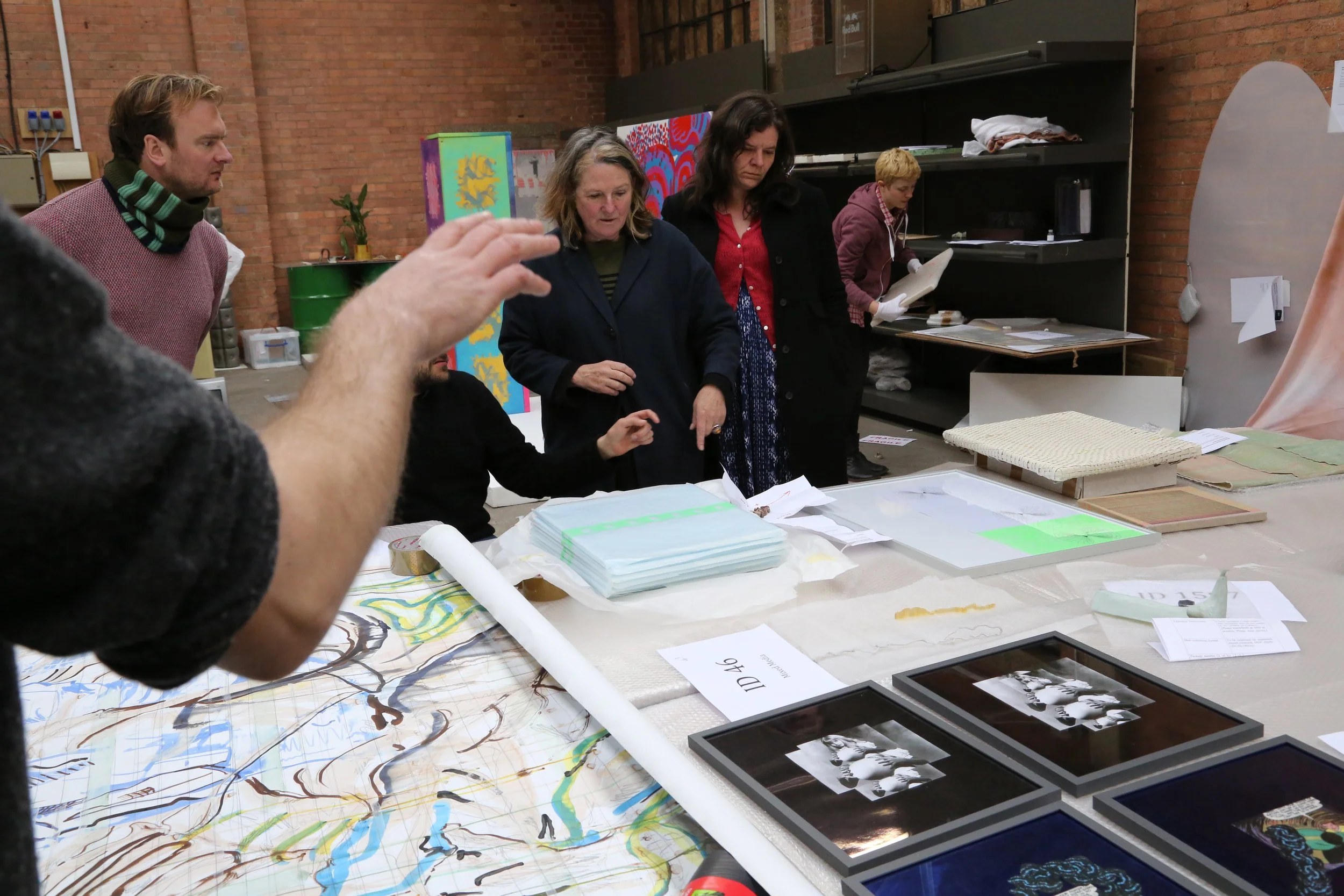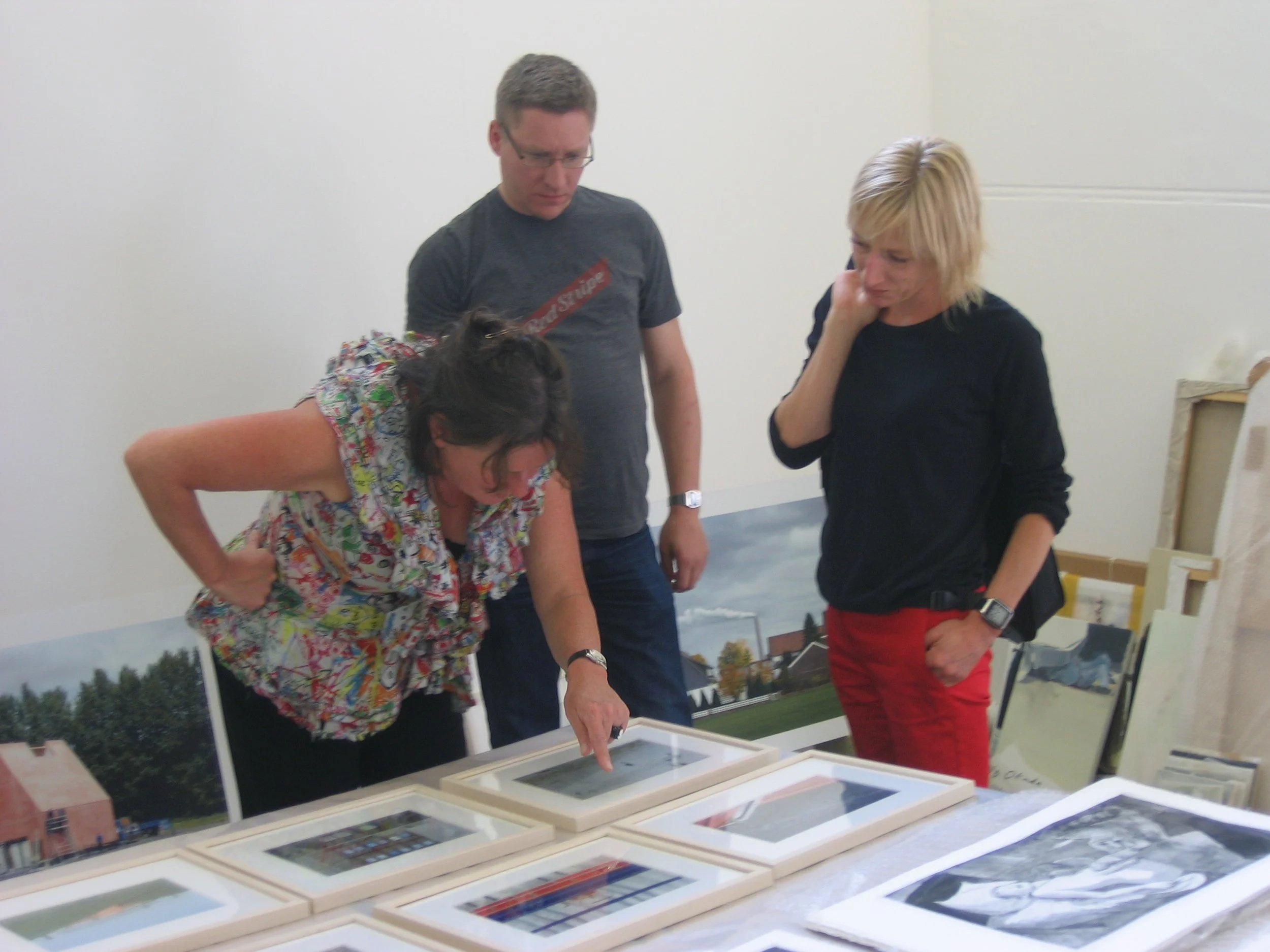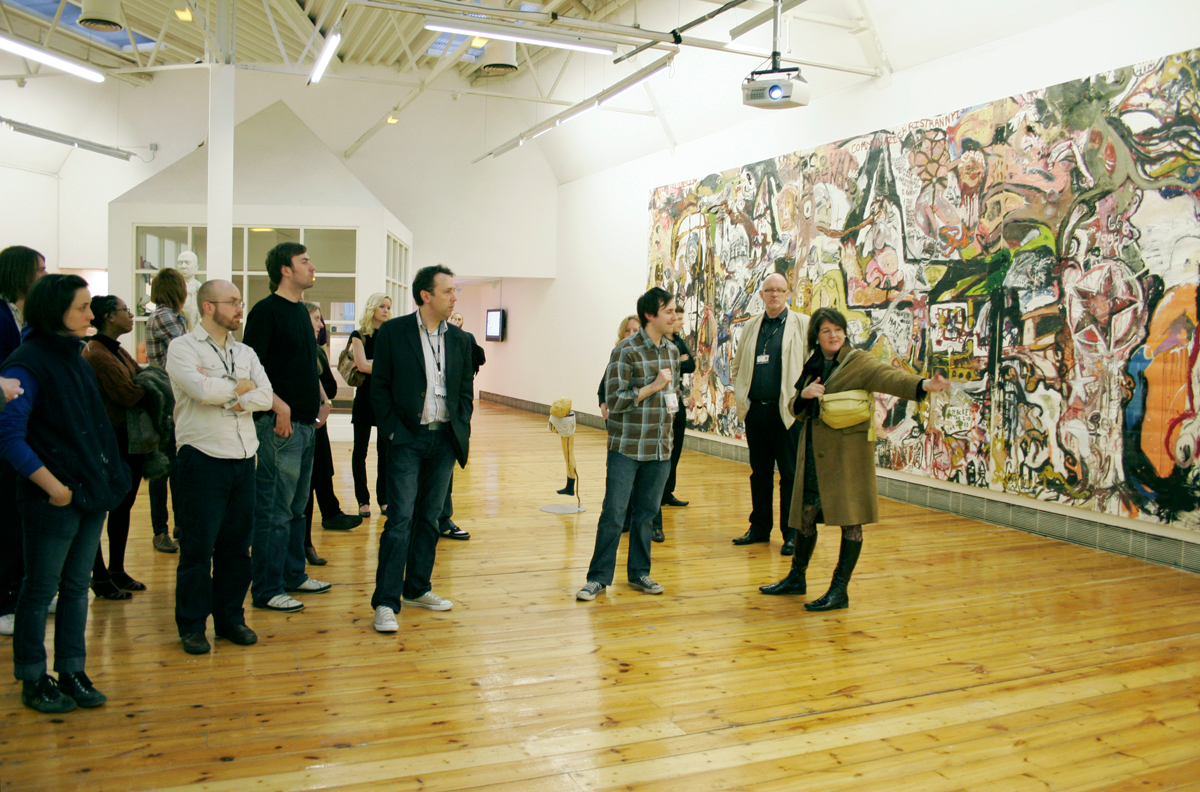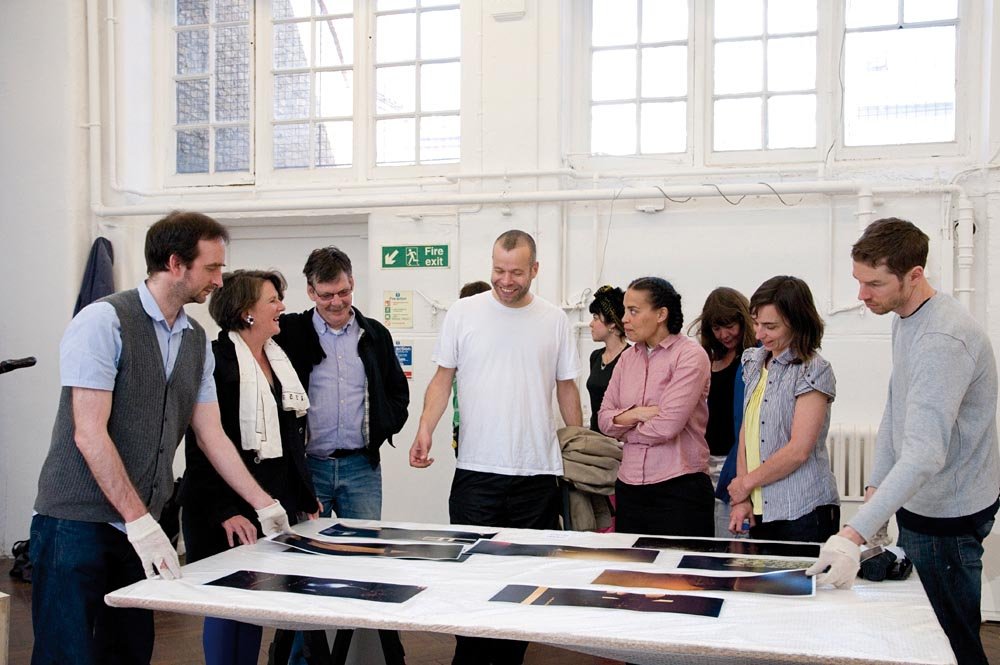New Contemporaries
When I was asked to be Chair of New Contemporaries, I had no idea what that might entail.
In fact, over the last 25 years, especially for the first 15, my involvement has been so super intense, that I have often considered the organisation as a second child. I presided over and chaired every single application sent in - on average by around 1500 people per year - with a varying number of accompanying images. So, in fact, I've had the extraordinary privilege of seeing pretty much everything: A barometer of work being made by undergraduates, postgraduates, and those artists a year out of art school. Not only have I witnessed and often keenly enjoyed the work itself but also been proudly involved in the highly acclaimed, much anticipated and visited resulting annual touring exhibition of some of the most exciting work being made here.
'What is it', the cry would go up as a moving image of a still work, a still of a film, and so on would penetrate the darkness during the first stage of selection. 'Click click' the slide, of course more recently the silent digitised image, would go through, another 'click' and then the next. It takes immense discipline and concentration to not just glaze over, not to lose potentially fascinating images forever as they slide by. As the Chair, I have had to be vigilant, without leading, I have had to suggest but that that is, in fact, the faint documentation of performance rather than documentation of installation, for instance. The process of selection takes major consistent concentration, and yet also a level of limbo and dislocation as well, for different, exceptional, slight shifts in genre, pace, and rhythm to dent the consciousness.
The process of selecting the selectors has involved a combination of knowledge, trust, and risk.....The amazing selectors selected themselves for their standing for the people applying, means that artists from abroad - Ellen Gallagher, Ken Lum, and curator Carolyn Christov-Bakargiev - for instance were invited exactly because they came from a completely different situation and didn't teach in this country. So, while people have been invited because they would be new, selectors like Chris Ofili, Mike Nelson, Chantal Joffe, Haroon Mirza, Jess Flood-Paddock, and Tacita Dean have actually been through the whole process from the other side, having exhibited in New Contemporaries themselves, perhaps very much earlier on.
The moving image has changed so extraordinarily over the decades. I suppose it would.
Before YouTube, irreverent clips of a boy standing on a chair singing or young women filming themselves bouncing up and down in front of a mirror, also singing, have now been replaced by the advent of the documentary with greater weight and research…
But the formal ambiguity, the 'what is it', a desire to mix and merge media and method has evaporated somewhat as a result of a change in the makeup of students, the cost of material, and the essential understanding that art has to pay. Recently, the complete lack of student grants, art education in school, part-time jobs, as well as the chance for an artist to do occasional part-time teaching at art school, has meant that success is seen increasingly through the prism of the art market. The autonomous art object produced for the art fair, now that changes again...
It cannot be said or explained too often that New Contemporaries is selected without selectors or the Chair knowing which school the student attends or used to attend, without knowing the name or age of the applicant. Such a fundamental principle prioritises the work itself before anecdotal expectation, or conscious as well as unconscious bias creeps in.
Selectors are without clues as to success, school, back on themselves, whether moving image, proposal, sound piece, painting, drawing print and so on onto the work in all its form and guises. It must be admitted that the very most fascinating persists to come through the process anyway, and yet the obvious star from art school does not necessarily 'get in'. So, the third-year undergraduate at Sheffield Hallam, Glasgow, and Nottingham Trent gets in as well as the postgraduate student at the Royal College of Art.
The relationship between the schools themselves and New Contemporaries is distinct in that we have, on purpose, never had any sort of relationship with any particular school. The organisation changed its name in 1989 from Young Contemporaries to New Contemporaries to cover the fact that students can be older too. People apply because we are the first stage, the first opportunity, for an artist to exhibit professionally outside the art school.
The biggest changes, overall, the use of moving image, the shifted ambition of scale as a reflection of the change in teaching, access, funding at art school, the relationship between the art market and the art school has obviously changed with the background of those that teach and people who can actually go to art school in the first place. The growth of the practise-based Ph.D., the need to have a Ph.D. to teach; The privatisation of the art school, which started in the 1980s, the shifts in international students somehow. More wealthy countries used to offer to send students, but then stopped and there is still a massive expectation and dependency on huge fees paid by overseas students. The payment of fees by all concerned, however, has led to the sense of a client economy, with the resultant lack of criticism that that will entail.
I have been asked over and over about trends, about what I see happening in any one year. I have always found it more important to defend the practise of art as a whole than point out whether the various tropes, like a stick leaning against the wall, dismembered feet, or hands against the background of snow. A sudden rush of bird houses in 2004, for instance, means anything much…...... We would, during the selection process, compile a list of repeated images and call out each time one of them appeared. Yet, importantly, while trends emerge and fade, it is essential to defend the non-functioning role of art itself and the freedom of people from every background and place to make art about anything whatsoever, and nothing much as well.
Sacha Craddock, 2021
Celebrating Sacha Craddock's tenure at New Contemporaries
“Without Sacha and New Contemporaries - my whole life would have been different - there’s no one like her - she is so passionate and intelligent and gives her whole self to art and artists...I think she’s incredible.”
“Sacha is brilliant. I feel lucky to know her and call her a friend. Every time I see her it makes me happy. I cherish the energy she gives me. Sacha gives energy to everyone. She is an amazing and unique spirit. Thank you for this Sacha.”
“Sacha, we’ll miss you! You have galvanised everyone and lead New Contemporaries team with such vigour. There’s no one like you! Your enthusiasm is infectious and has been a magnet for the young and for everything fun, exciting and new. You’ve been such a champion of so many people. Personally, I’m grateful for all your support and for the time we spent together during the Turner Prize exhibition in Hull. Thanks for everything you have done and for getting me on board. Looking forward to hearing what you get up next and to keeping in touch. There’s no stoping you!”
“Sacha has contributed to many important, celebratory and funny times in the history of contemporary art in London over the past decades. She has hosted, supported, championed and partied with so many of us and her commitment to NC gave new art from UK schools a dynamic platform from which artists could launch.”





